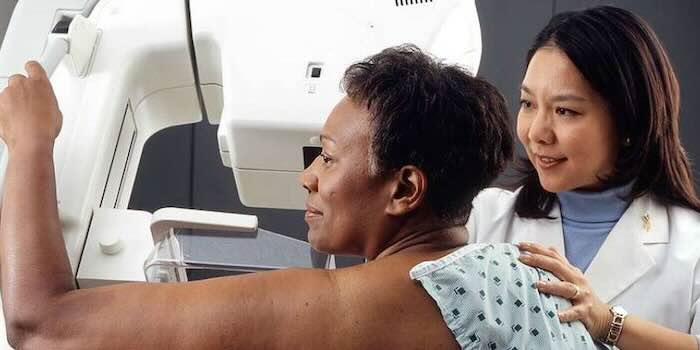By W. Gifford-Jones, MD and Diana Gifford-Jones ——Bio and Archives--March 9, 2024
Health and Medicine | CFP Comments | Reader Friendly | Subscribe | Email Us

At what age should women’s breasts receive radiation to detect breast cancer? In Canada, some provinces are lowering the age of eligibility from 50 to 40, even before a task force releases an update on breast cancer screening guidelines. The current guidelines do not recommend routine screening for women in their 40s. In the U.S., a separate task force urges women ages 40 to 49 to get this procedure every two years. Why the conflicting advice?
Mammography as been swirling in confusion for decades. In the past, some experts were adamant there was no evidence regular mammograms decreased the risk of breast cancer. Others, equally qualified authorities, were concerned that repeated exposures of breast tissues to radiation could cause breast malignancies.
A significant fact tends to go unnoticed. Women are told over and over that routine breast cancer screening diagnoses early breast malignancies. This is a half truth. What the medical profession should say is that breast cancer screening diagnoses a malignancy as early as possible. Why is this distinction vital?
Mammography is a “lump diagnosis”, meaning cancer cannot be identified until a cancerous growth reaches a detectable size. Breast cancer may be present for several years before it can be seen by mammography. There is a possibility that it may have already spread to other parts of the body.
Compare this to a Pap smear of the cervix. In this test, a swab is used to obtain a small amount of tissue from this area. This specimen is then examined by technicians using a high-powered microscope looking for premalignant cancer cells. Unlike mammography, it’s a microscopic test, not a lump diagnosis.
How accurate is the Pap smear? There is always the chance abnormal cells will be missed. But it is unlikely with repeated tests. Besides, precancerous cells of the cervix are very slow growing, allowing time to discover them.
It is unfortunate that doctors do not have a test that can detect precancerous cells of the breast. Instead, it’s routine mammography, and a dose of radiation with each one, that is only able to see the problem after a lump becomes large enough to be visible by x-ray.
X-rays must be accepted to diagnose breast cancer. This causes concern among certain authorities. Why? With each x-ray, radiation accumulates in the body. Some argue the cumulative effect of x-rays is minimal in comparison to naturally accruing exposure. Others take a more cautious attitude. Pouring through medical research suggests the jury is out on how much radiation increases risk, and when.
An x-ray can confirm a broken bone. Dental x-rays determine tooth decay. And head x-rays can find a brain tumour. But not every headache should lead to an x-ray. Yet studies show doctors order them too often. It’s not just x-rays to worry about. CT scans are another source of radiation.
To be fair to doctors, it is not always their fault. Part of the problem involves patients who worry every pain must be investigated or who insist on x-rays for every problem. To illustrate, for a pain in the stomach, the first step should be a sound diet and active lifestyle to cure the discomfort, not another x-ray.
What about the mammogram debate and conflicting guidelines? More radiation tends to be the conclusion. But this is a case of patients needing to be involved in decisions about their own healthcare. It’s a matter of being informed, weighing the pros and cons with your doctor, and then taking your own decision. But patients and doctors should share an understanding that there is no easy answer.
Sign-up at [url=http://www.docgiff.com]http://www.docgiff.com[/url] to receive our weekly e-newsletter. For comments, contact-us@docgiff.com. Follow us on Instagram @docgiff and @diana_gifford_jones.
View Comments
W. Gifford-Jones, MD is the pen name of Dr. Ken Walker, graduate of Harvard Medical School. Diana Gifford-Jones is his daughter, a graduate of Harvard Kennedy School. Their latest book, “No Nonsense Health” is available at: Docgiff.com
Sign-up at DocGiff to receive our weekly e-newsletter. For comments, .(JavaScript must be enabled to view this email address). Follow our new Instagram accounts, @docgiff and @diana_gifford_jones
.